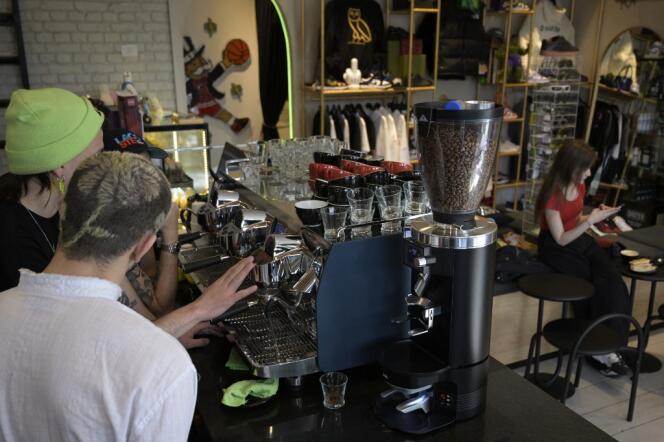LETTER FROM BUENOS AIRES
Rita, Posta, Franja… Almost everywhere in the trendy neighborhoods of Buenos Aires these businesses with short names and similar labels flourish: small, neat, a limited menu displaying the essentials on the slate “flat white”, “latte” And ” espresso “. For about three years, Argentina has been experiencing a boom in “specialty coffees”namely establishments offering a better quality drink, from the grain to the roasting methods or machine maintenance.
The trend arose where all gastronomic fads begin, in Palermo, the fashionable and touristy district of Buenos Aires, before taking over the rest of the city. But it has also spread to the rest of the country. “There is a change in taste. Because the coffee culture has always existed here: Argentines love to meet outside for a snack, or to have breakfast with a croissant [« medialuna », dans sa version argentine] and a coffee. But now they do it with a quality drink », remarks barista Ramsès Balzan, sipping a filtered Honduran infusion with notes of chocolate and red fruits on a terrace in the capital. For a long time, drinking an espresso in Argentina made black fans cringe. In the cups of neighborhood bars: an infusion with a bitter taste, sometimes burnt, served too hot.
In an article published in 2019BBC Mundo tries to explain “why the coffee is so bad in Buenos Aires, the city of the most beautiful coffees”. Even in the sumptuous “notable bars”declared cultural heritage because of their architecture or history, “coffee itself has never been important. What is important is the fact of physically finding yourself in this space”, Carlos Cantini, author of the Café Contado blog, explained to the British media. Especially since, according to the specialist, among the millions of Italian and Spanish immigrants who landed in Argentina between the end of the 19the and the beginning of the 20th centurye century, it was the Spanish who imposed their poor quality coffee culture. Moreover, in the land of mate (the typical infusion of the region), annual consumption per inhabitant amounts to only 1 kg, notes the Télam press agency (compared to 5 kg in the European Union).
Gross margin of 75%
“We prepare coffee with a lot of concentration. For an espresso, it’s 30 milliliters of water and 18 grams of coffee weighed on a scale. We serve it at 70°C so that it retains all its flavor”boasts Eugenia Cuttat, manager of the first Cuervo, a pioneer of specialty coffee in Buenos Aires, opened in 2017 before three establishments of the same name launched in the following years.
You have 58.39% of this article left to read. The rest is reserved for subscribers.
